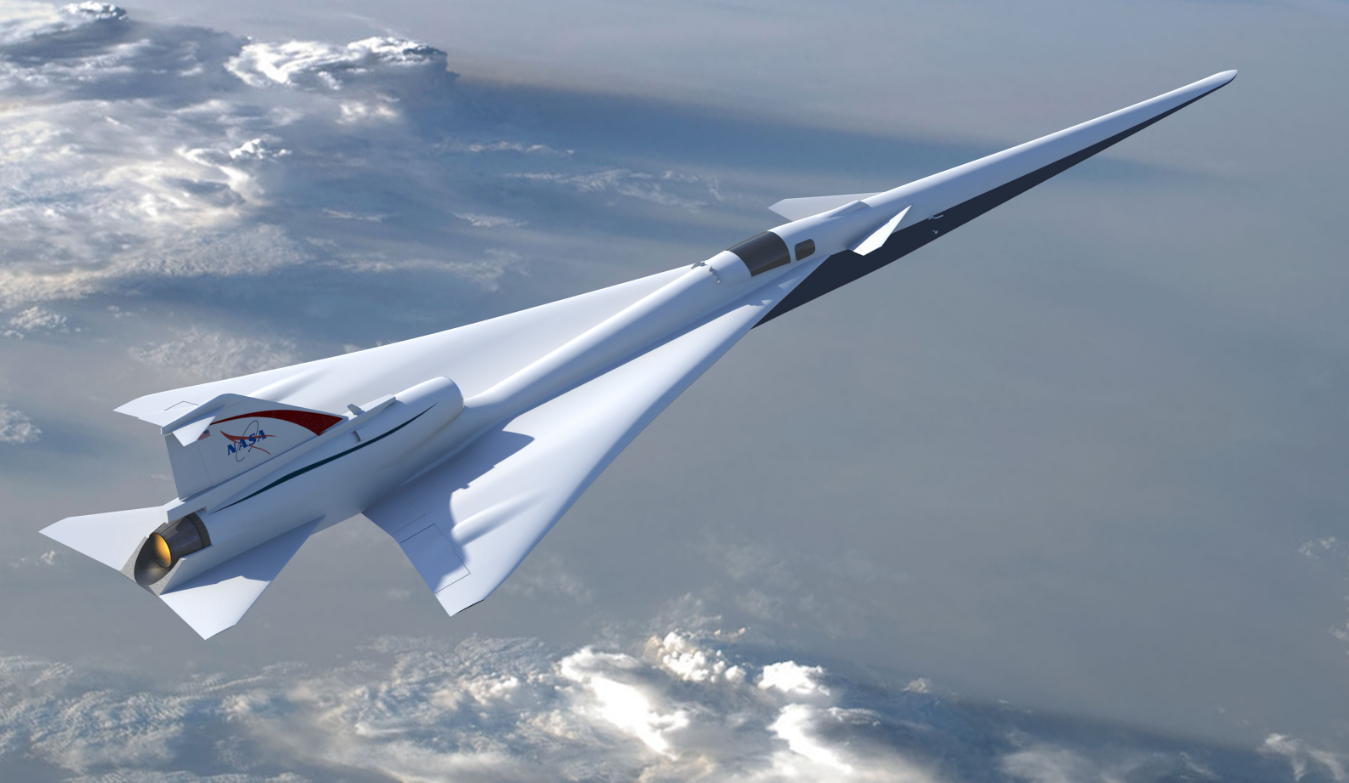By Jean-Jacques DeLisle, contributing writer

QueSST. Image source: NASA.
Since 1973, the U.S. FAA has quieted the skies by banning supersonic flight over populated areas in order to prevent sonic booms. Commercial air travel has thus been limited to less than 660 miles per hour, just under where a typical airliner travelling at 30,000 feet would hit the sound barrier and produce window-shattering sonic booms at ground level. But new technology from NASA can turn such sonic booms into mere “thumps” about as loud as closing a car door, which may allow lifting of that air travel speed limit.
Because there may be substantial opportunities for higher and faster supersonic jets, NASA has procured funding and will soon starting bidding on creation of a demonstration supersonic plane called the Low Boom Flight Demonstration (LBFD) Quiet Supersonic Transport (QueSST). NASA and contractor Lockheed Martin developed the technology behind QueSST and has successfully tested it at the scale model level in supersonic wind tunnels. Now, NASA seeks to leverage the QueSST project data to help develop plane technology that can be adopted freely by aircraft manufacturers for future supersonic plane designs. The project team will start the process of soliciting proposals later this year and awarding a contract early next year to build a piloted, single-engine experimental LBFD X-plane for testing in 2021.
Once low-boom flight technology is proven, commercial aircraft are sure to follow. According to project manager for NASA’s commercial supersonic research team, Peter Coen, prevailing shifts in the air transportation industry and flight patterns “will drive the demand for broadly available faster air travel.” He believes that this will make it possible for companies to offer competitive products in the future.
Achieving such quiet supersonic flight will be no easy feat, however. It has taken NASA and Lockheed Martin researchers some time and extensive fluid dynamic modeling just to develop the basics of the design. They discovered how subtle modifications in a supersonic aircraft’s design can manipulate the shape of the sound waves emanating from the craft to avoid forming sharp N patterns associated with sonic booms. By dispersing the sound waves over a much broader set of points behind the plane, the supersonics are reduced, possibly up to 30 dBa. Compare this to the Concorde’s 90 dBa, and the demonstration craft could exhibit a supersonic sound level 1,000 times less.
But there are more obstacles than just sound reduction from supersonics. Other challenges include reducing engine noise and carbon emissions and overcoming legislation. A research team at MIT, funded by NASA, is looking into how to reduce carbon emissions and improve the environmental impact of high power requirement supersonic flight. GE is working on methods of reducing engine noise, which may also require placing the engines above the wings. However, overcoming legislation challenges may not be as straightforward. The way the 1973 ban is written will require Congress or FAA to cancel the plan, explicitly, even if the original concerns that led to the ban are already solved with modern technology.
As there is perceived to be substantial benefits to accessible supersonic flight, within the next decade, NASA and aircraft manufacturers may be able to improve the technology and make progress with the environmental and legal concerns surrounding supersonic flight. If so, coast-to-coast and international travel could be reduced to a fraction of the current time, and maybe even as significantly, these advances could pave the way for upcoming orbital X-plane systems.
Advertisement
Learn more about Electronic Products Magazine





